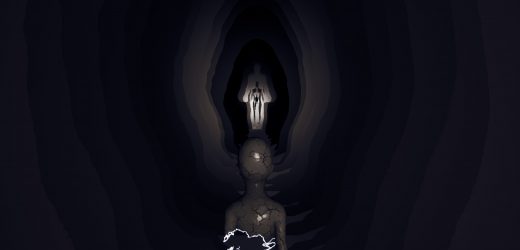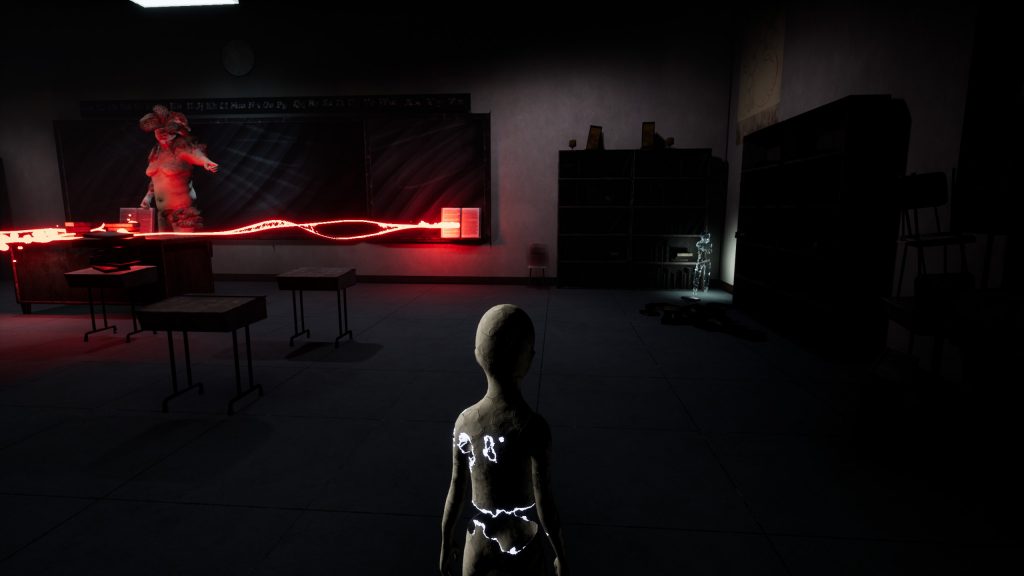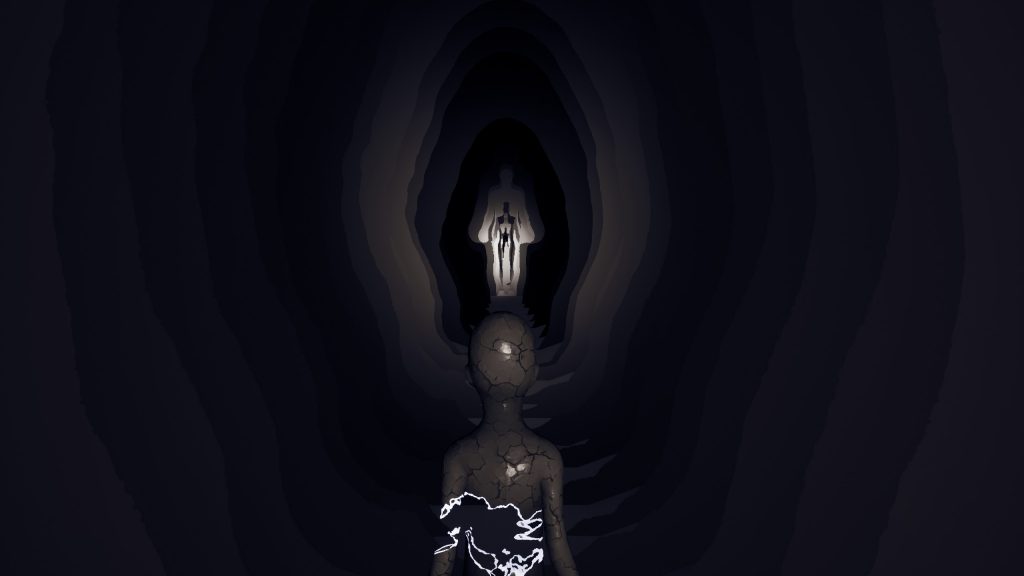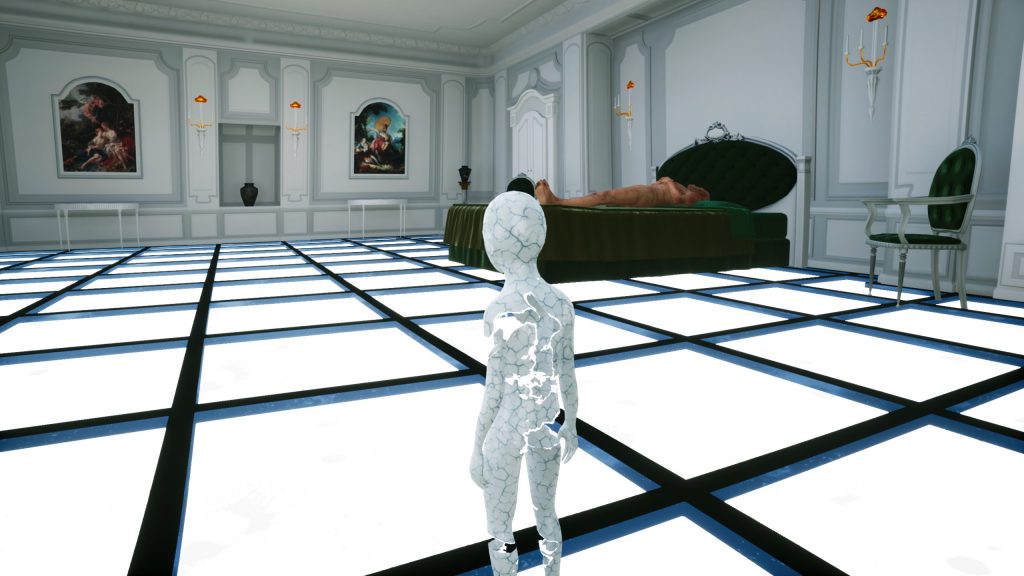The Inner Friend (Going Back)

Source: Review Copy
Price: £11.39
Where To Get It: Steam
Ah, Carl Jung and David Lynch. One an odd student of Sigmund Freud’s, whose theory of the Shadow (the unconscious, unknown part of ourselves, which we both strive against and come to acknowledge) inspired quite a few dream based media. One a film-maker well known for his surrealism, and, of course, Twin Peaks. Which, itself, inspired Stranger Things, and that last part, as well as elements of the soundtrack to the game showing similarities, is why, if you watch a Let’s Play of this game, Stranger Things gets mentioned. It’s the most recent thing someone can point to that it’s “Like.”

So, The Inner Friend is a puzzle game with horror elements, because what the protagonist (depicted as broken and incomplete) deals with is fears. Traumas in surreal, dream-like form. School, where the teachers can seem like monsters, and the books and educational television shows seem to drain our life. A museum, symbolic of our anxious and self critical nature, our damaged nature for all the world to gawk at, while our damaged self scans and finds wanting… Our damaged self.
Of course, these are just interpretations. That’s the thing about symbolic representations in a surrealist dreamscape… But the facts that they are a dreamscape, and they are the products of someone in pain, trying to comfort their Shadow… To acknowledge them.

However, part of a dream is not knowing the rules of the dream. So each area, while it has a single puzzle type you repeat a few times, is a different puzzle in each area. And the game does some interesting things. Despite being a linear experience, it gives that dreamlike illusion of nonlinearity by turning you back on yourself, making the path forward be the way you came, and giving you the impression that which lit window you take to the next world, which of the buildings twirling in the void you visit, even matters. All roads lead to the next dream. There is a second cutscene at the end if you collect all of the objects in each dream (Listen for the tinkles. Always listen for the tinkles), but its original ending still interests.
The music is good, the visuals are good, the soundscapes are bewildering (aka good) and, generally speaking, there’s clear hints leading you through what you’re meant to do, which is good. It even does some fun visual tricks in some areas, like the fish-eye lensing in the museum. Less good is that the camera can be a little wilful at times, that I experienced a hang on trying to enter the third dream (I got past it, but it is a bug I encountered), and… Well, not so much less good as an interesting choice is that it frontloads its more difficult puzzles early. By the time of the hospital, what you want to be doing is pretty well communicated.

So, would I recommend it overall? Well, I’m a bit jaded on the horror front, so I can’t really say anything did more than somewhat unsettle me, and chase segments merely feel… Well, like chase segments. Try real hard to focus on the objective, don’t look at the gribbley, got it, done. But it definitely unsettles in places, and it is an interesting game, so, overall? Yeah, I’d recommend this. If you’re turned off by short games, yup, it’s pretty short, jog on, but if that isn’t a turnoff, and you find an hour or two of an interesting experience worth more than 30 hours of a bland one, then yes, this is an interesting experience.
The Mad Welshman can’t really say that he’s fully up on his Jungian Psychology. But he does enjoy some David Lynch.
